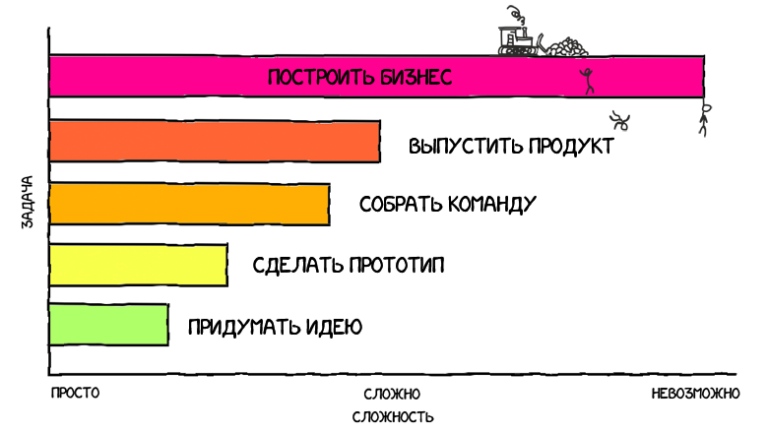Fullstack QA – the way of the samurai, or unlocking the potential of a tester
Fullstack QA specialists are in high demand among employers. In today’s article I’ll tell you what the value of such employees is, what hard and soft skills are needed, and why fullstack QA is the future.

Hello everyone, my name is Maxim Solovyov, I am the Head of QA for BI analytics, ML and EPM Polymatica products at SL Soft. I worked in different teams ranging from 2 to 20 people, both in commercial organizations where there was no documentation, and in serious state-owned companies. I also had the opportunity to be the only QA on the project. Gained extensive experience: from testing databases, message brokers and various integrations to testing UX, performance and writing end-to-end autotests. I started as a junior, grew to a lead with my own team and my own processes – now I am a servant leader of the QA department.
Let's plunge into history and the era of origin)
In 2017, to enter the profession of “manual tester”, Roman Savin’s cult book “Dot Com Testing” and basic SQL skills were enough for me. Now, of course, this is no longer enough: with the development of technology and increasing requirements for software quality, the bar for QA specialists invariably rises.
Already in 2019, employers expected that a QA would not only be proficient in a number of testing tools and have a basic grasp of programming languages and frameworks, but also understand how software is created, understand the architectural features of the system, and be able to communicate correctly with other people—both colleagues and with clients (proof). When searching for automation testers, companies were faced with the fact that candidates know how to “test by hand”, but do not care about the cleanliness of the test code and do not have experience in good practices.
Further more. Interestingly, not only the list of required hard skills is increasing, but also soft ones, and they are slowly increasing their importance when choosing a candidate. For those who want to go deeper, here is a selection of relevant materials: two years, year, Half a year ago.

QA trends are inextricably linked with development trends: everything is aimed at reducing time-to-market. In the 2010s, a kind of revolution took place in the IT industry: flexible methodologies replaced classical ones, and this would not have happened without adaptation and acceleration of testing cycles. Since then, the stakes for automation and universalization of the QA workforce have been rising. There is some debate as to whether manual testing will remain relevant (spoiler alert: yes). An example is this one articlewhere there is a remarkable phrase:
76% of QA specialists are now somehow involved in the test automation process. This means that the line between automation and manual testing is blurring even further, and this division will become less noticeable in the coming years. Some of the most sought-after QA professionals will be those who have the skills needed in both areas and can effectively manage a comprehensive testing process.
More useful professional statistics on the topic can be found here.

I completely agree with the trends described: to be a successful QA, you need to constantly improve your skills, master new tools and modern approaches. With work experience comes the understanding that fullstack QA is a logical professional development.
Current requirements for fullstack QA
Fullstack QA is a professional who has a wide range of skills in the field of manual and automated testing at different levels, which is described in detail here And here. Therefore, such a specialist ensures high quality of the product. It also optimizes the work (for example, it will determine where to immediately write an autotest, so that during several iterations of testing you will not burden yourself with routine), review the developer’s code, issue comments on the analyst’s documentation, and compile a list of shortcomings of the designer’s prototype.
The requirements for full-stack QA skills are extensive, but in fairness, I note that they are relevant for any QA specialist, both in terms of hard and soft skills. Technical: knowledge of programming languages, databases, OS/virtualization systems, continuous integration, development and testing tools and methods, including basic knowledge of testing theory. Soft skills: ability to adapt to changes, stress resistance, attentiveness, perseverance, ability to communicate effectively with various members of the development and testing team.

So, the sought-after full-stack QA has both a high level of technical skill and developed emotional intelligence. A plus is a wide range of knowledge and skills in related areas related to development, technical support, DevOps, the work of a project manager and systems analyst. You are also a bit of a leader and sometimes a psychologist. This vinaigrette allows you to be a valuable specialist and truly improve the level of product quality at all stages of the SDLC, including working on processes in the company as a whole.
How can fullstack QA benefit you?
Optimize testing work
One of the key competencies of fullstack QA specialists is work optimization: this requires the ability to effectively test applications at various levels, from modular to automated E2E testing. Constant integration of the activities of testers with developers using CI/CD tools makes it possible to identify potential problems and errors before the code reaches production. Thus, optimization improves the quality and reliability of the product. And for a specialist, this means the opportunity to focus on non-functional software requirements.
Improve impact analysis
Essentially, it is the ability to understand how changes to code or an application can affect other components of the product. Fullstack QAs have the necessary skills and tools to improve impact analysis, which allows them to effectively identify potential problems and errors and prevent them from occurring.
Speed up root cause analysis (RCA)
Full-stack QA professionals must be able to efficiently and quickly identify the source of an issue, speed up the RCA process, and reduce the time required to resolve the issue.
Write high-quality code – “developer level”
In addition to knowledge of git, sql and the programming language for fullstack QA, it is important to understand the basic principles of software development and key concepts, for example, what is modularity, encapsulation, inheritance and polymorphism, as well as the ability to work with test frameworks.
Use AI as a tool for testing and improving processes
One of the current trends in testing is the use of artificial intelligence to speed up the automation process significantly, as well as to improve its efficiency. How AI can help: increasing test coverage, generating code and test data, training employees (including when learning programming languages), early detection of defects (analysis of documentation and static code analysis), creation of “self-healing” tests, automation of routine and typical tasks, automation of analysis and collection of statistics based on testing results, etc. You can read more here.
QA must validate and correct the results obtained through the use of AI. Only a specialist with a fullstack level of knowledge can do this efficiently.
Conclusion

In my opinion, building up competencies to full-stack is essentially the only option for developing a QA specialist. With current technology acceleration and development trends, fullstack QA salaries will most likely level off to the dev level. A creative approach and the ability to think outside the box help QA fullstack specialists find innovative ways to solve problems and improve the quality and reliability of products. Professional programming training and experience with various technologies enable them to conduct complex testing and optimize workflow. The future of QA promises to be interesting and promising, and upgrading your qualifications to fullstack QA is a great way to stay on trend and be the most valuable employee in the company.




